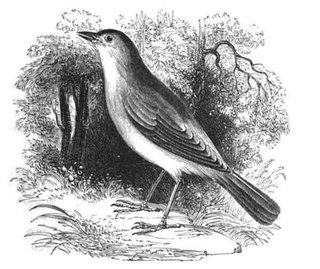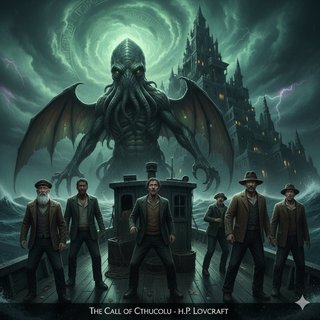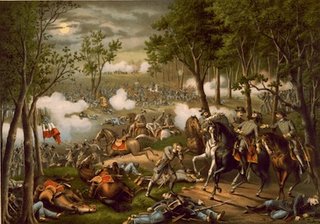Short Stories for High School II
We offer an encore short story collection to Short Stories for High School. Teachers and students alike will enjoy reading these stories to stimulate meaningful classroom discussions. You may also enjoy our African American Library, WWI Stories, and Poetry for Students. We also offer Teacher Resources for all grade levels.
Teachers, please login or create an account to access extra features.
A woman suffering from postpartum depression is prescribed the "rest cure" by her physician husband—complete isolation, no work, no stimulation. Confined to a room with hideous yellow wallpaper, she begins to see a woman trapped behind the pattern, trying to escape. As the days pass, the line between observer and observed blurs completely. Gilman's masterpiece is a devastating critique of 19th-century medical treatment of women and a powerful exploration of autonomy, sanity, and the oppression of women in marriage. This is one of the most important feminist literary texts ever written, essential reading for understanding the intersection of gender, medicine, and power. The story is semi-autobiographical, drawn from Gilman's own traumatic experience with the "rest cure."
The Nightingale and the Rose
by Oscar Wilde
Oscar Wilde takes up the topic of true love in The Nightingale and the Rose. Is it Profound? Everlasting? Fickle? Wilde spins up a tale centered around a young man, a nightingale and a rose bush, and a professor's daughter. Where does the wisdom lie?
Asleep in Armageddon
by Ray Bradbury
A space traveler crashes on a seemingly dead planet and discovers an ancient ruined city. But as night falls, he realizes he's not alone—the planet itself seems alive with malevolent consciousness. Bradbury crafts a psychological horror story set in space, exploring themes of isolation, paranoia, and the price of survival. As the protagonist struggles to maintain his sanity, the line between reality and hallucination dissolves. This early Bradbury story showcases his mastery of atmosphere and his ability to blend science fiction with gothic horror, creating a claustrophobic nightmare on an alien world.
A New England Nun
Now it's Mary E. Wilkins Freeman's turn to write about love. Louisa Ellis, Dagget, and a dog named Caesar test the old aphorism that "absence makes the heart grow fonder." The young couple becomes engaged, then Dagget strikes out to seek his fortune before they marry. Fourteen years pass and Louisa Ellis grows comfortably independent. What happens when her fiancee returns?
The Call of Cthulhu
"The most merciful thing in the world, I think, is the inability of the human mind to correlate all its contents." So begins Lovecraft's most famous story, a cosmic horror tale told through documents, newspaper clippings, and testimonies. A young man inherits his great-uncle's research into a mysterious cult that worships an ancient entity—Cthulhu—slumbering beneath the Pacific Ocean. As he pieces together evidence from around the world, he uncovers a terrifying truth: humanity's insignificance in a universe filled with incomprehensible, malevolent beings. Lovecraft created an entire mythology with this story, influencing horror and science fiction for generations. This is the story that gave us "Cthulhu" and the concept of cosmic horror—the idea that the universe is indifferent to humanity and filled with entities beyond our comprehension.
The Invisible Girl
by Mary Shelley
Gothic literature fans of Mary Shelley will enjoy her short story. "[The light in the abandoned tower] is burnt by the ghost of a maiden who lost her sweetheart in these parts; he being wrecked, and his body found at the foot of the tower: she goes by the name among us of the 'Invisible Girl.'"
The Masque of the Red Death
A plague called the Red Death ravages the land, killing with horrible swiftness. Prince Prospero, wealthy and powerful, gathers a thousand friends and retreats to the safety of his castellated abbey, sealing themselves inside to wait out the pestilence in luxury and decadence. Months pass in pleasure and safety—until Prospero throws an elaborate masquerade ball in seven colored rooms. At midnight, a mysterious figure appears dressed as the Red Death itself, and Prospero's attempts to confront the intruder lead to a chilling revelation. Poe's allegorical masterpiece explores themes of mortality, the futility of trying to escape death, and the arrogance of the wealthy. The seven rooms, the clock, the colors—every element carries symbolic weight in this unforgettable meditation on the inevitability of death.
Letter to Sarah Ballou
A lawyer and politician turned Civil War soldier, Major Sullivan Ballou, was torn between love for his wife and family and his feelings of devotion and duty to his country. He penned his now famous letter on July 14, 1861. He was mortally wounded a week later at the First Battle of Bull Run (or First Manassas as the Confederates called it). He passed away on July 29th, just fifteen days after authoring the letter. Part of our collection of Civil War Stories
The Veteran
The Red Badge of Courage is one of the most widely read novels in English speaking high schools around the world. If you have read it, then you have already met Henry Fleming. In this story, Crane revisits Fleming and weighs in on character and courage one final time. Featured in Civil War Stories
The Affair at Coulter's Notch
This is a story that is rife with deeper symbolism as a white officer and his soldiers, working their artillery, are transformed into 'black' men by their work. But do not focus on the literary techniques to distraction or you will miss the real art of the story, which first emerges with a soldier's hesitation. Featured in Civil War Stories
To the Virgins, To Make Much of Time
Made famous to modern audiences when it was recited by Robin Williams in the movie Dead Poets Society, Herrick's poem is emblematic of the carpe diem theme which promotes the idea that time is short, and one must live for the moment. Featured in Poetry for Students
The Cat
Freeman delivers this well crafted tale with the cunning and patience of her protagonist. A brilliant piece of writing, conveying the balance of survival and need for companionship shared by all creatures.
The Father
The Norwegian author, and winner of the 1903 Nobel Prize in literature, Bjørnstjerne Bjørnson uses just over 1,000 words to spin this powerful morality tale. This story is beloved by the people that "get it." If you finish the story and don't get it, read it a second time — as a man vs. himself story — and trace the development of Thord's conduct and bearing as well as his use of money.
The Passing of Grandison
Charles W. Chesnutt was born in Ohio in 1858, the son of freed slaves. A businessman and author, Chesnutt focused his writing efforts on post Civil War racial issues. This clever story is also a featured selection in the African American Library collection.
A Journey
There are many journeys happening in this story: the actual train travel, an individual's journey through their own life, and the journey of a marriage as well. The title itself is a play on words. This seems to be a story that people enjoy even if they are unsure what it means. It's a good one for classroom discussion; where does the journey end?
Second Inaugural Address
When Abraham Lincoln emerged on the scene of American History, he carried with him a distinctly American voice, one that had broken free and clear of a European manner of speaking and writing. In this brief address, Lincoln spoke so little, yet said so much. "Fondly do we hope, fervently do we pray, that this mighty scourge of war may speedily pass away."
The Shed Chamber
"The world seemed very big and Tupham Corner a very small corner in it. I will not say anything more about this part; you'll find it out soon enough yourselves, when you go away from home the first time."
The Marry Month of May
by O. Henry
Featuring O. Henry's characteristic plot twists, this amusing story about springtime love gives a whole new meaning to the term "ice queen."
Boule de Suif
Okay boys and girls . . . this one is extra credit. You may have enjoyed his story, The Necklace. I added this one after a long deliberation. It is for advanced students only and is rather long for a short story with more than 14,000 words. You will find introductory material in Maupassant's bio where I suggest you read the brief description in the second to last paragraph and continue if you are inspired. May the brave proceed.
More titles are available in Short Stories for High School, Favorite Short Stories Collection and 75 Short Short Stories





